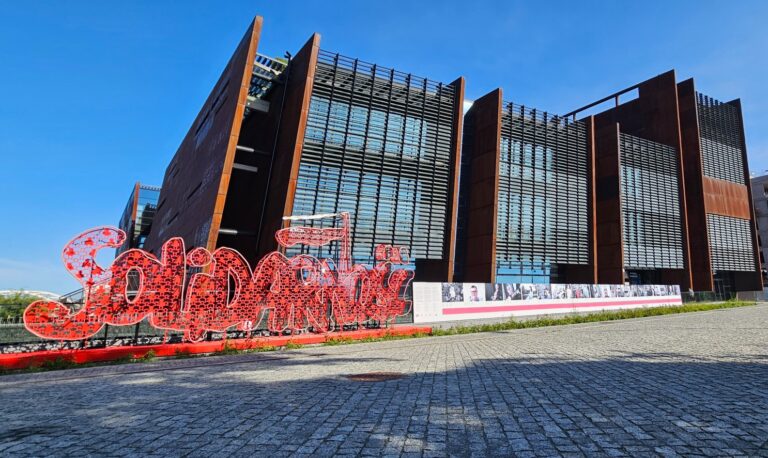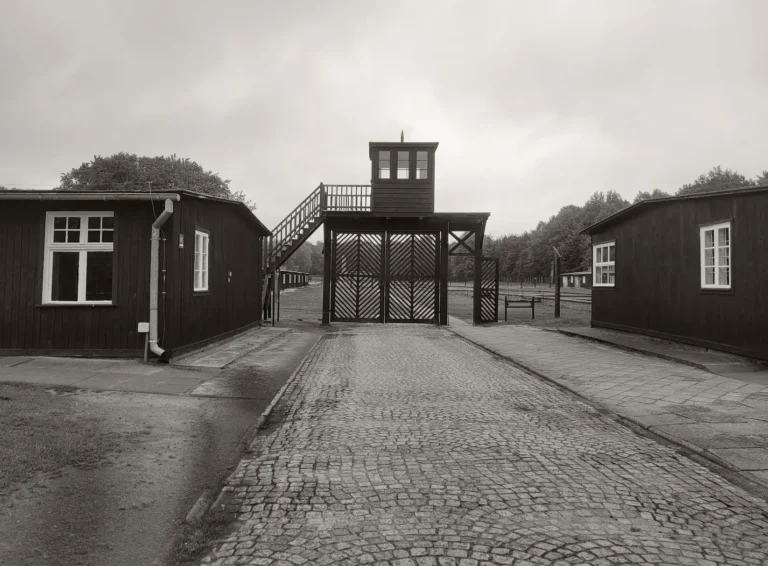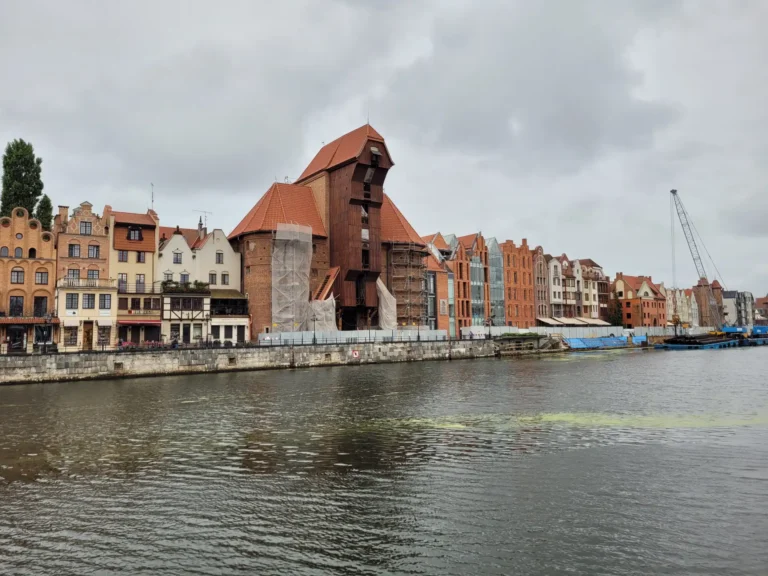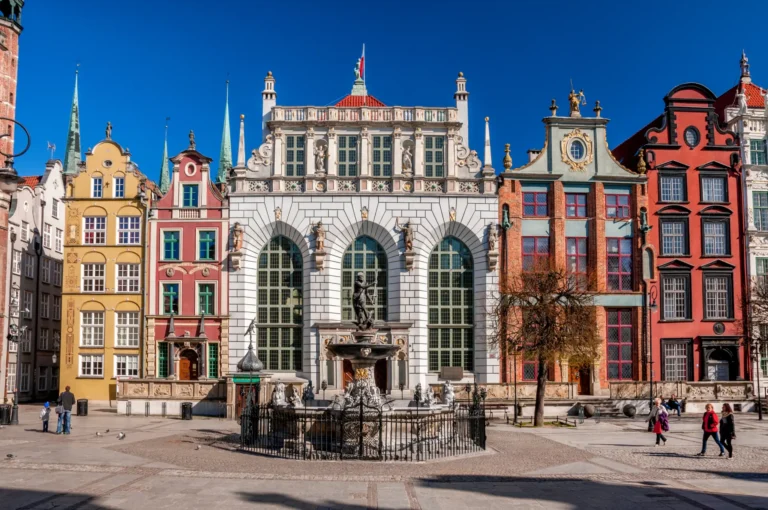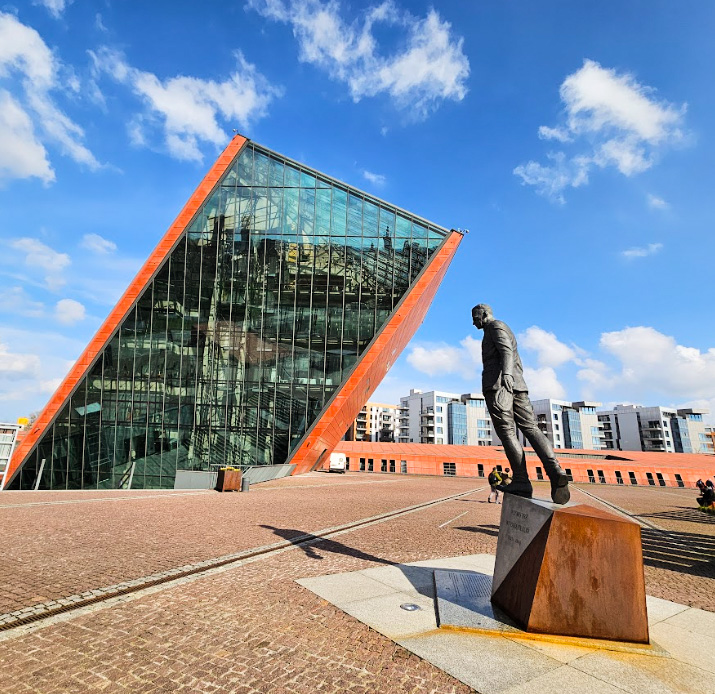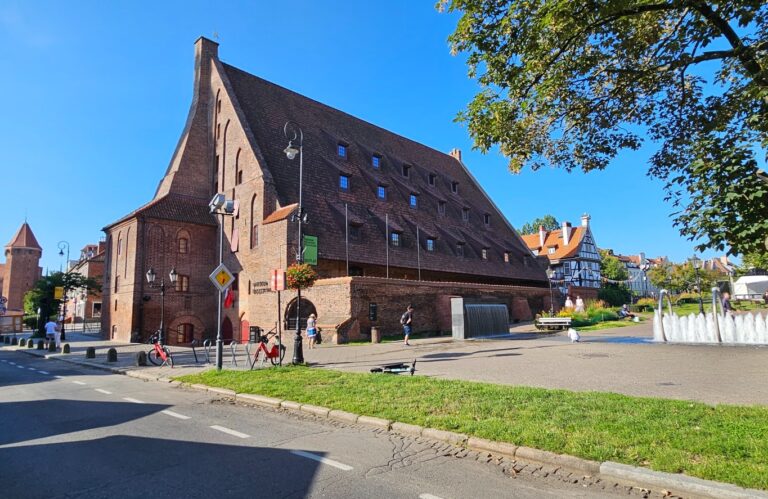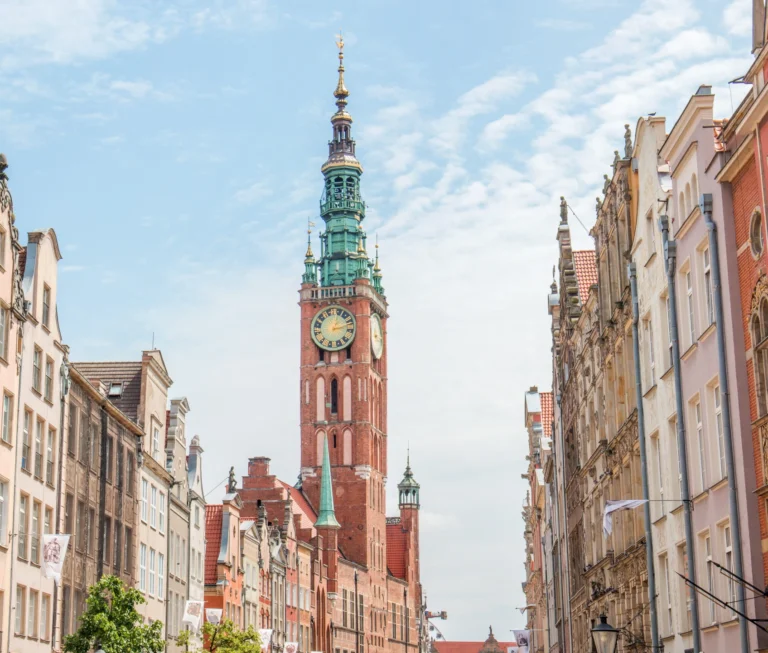Golden Gate

More about Golden Gate
The Golden Gate, completed in 1612, decorates the beginning of Długa Street in Gdańsk. Its Mannerist architecture with classical influences is visible in its triumphal arch and allegorical sculptures. Abraham van den Blocke’s design harmoniously combines styles, emphasizing the city’s former wealth and importance.
Touring Golden Gate
The most important attractions of Gdańsk with a guide
- The Royal Road with the Main Town Hall, Neptune’s Fountain, Artus Court and beautiful tenement houses of wealthy townspeople
- The Golden Gate, Torture Gate, Green Gate and other water gates
- St. Mary’s Basilica
- Mariacka Street, known for its beautiful buildings and amber jewelry sellers
- Old Port with Crane, Ship “Sołdek”
- The Great Armory and the bustling Piwna Street
- Jan Hevelius Monument and the Great Mill
- The oldest parish church in Gdańsk – St. Catherine
- Church of St. Bridget, the symbol of Solidarity
Description:
We will start from the picturesque Długi Targ, where we will see the most important monuments, including: The court of Artus and Neptune, the guardian of the city. Then we will go to the monumental St. Mary’s Basilica, one of the largest brick churches in the world, to admire its magnificent interiors. Walking along the Motława River, we will stop at the Old Crane, which is the symbol of the Gdańsk port. We will end the tour at the Neptune Fountain and the City Hall, discovering the secrets of Gdańsk’s history.
- Sightseeing with a licensed guide
- Admission to St. Mary’s Basilica
- Admission to the church of St. Catherine
- Admission to the church of St. Bridget
- Headset (for groups of more than 10 people)
- The tour will run with a minimum of 5 registered adult participants. If the required number of people are not gathered, we will refund your money.
- Guided walking tour
- We recommend adapting your clothing to the prevailing weather conditions.
- Organizer: Etours sp. z o. o.
Old Town: The most important places in Gdańsk with a Private Guide
Prepare for a magical journey through the history and culture of Gdańsk’s Old Town on a unique tour with a private guide. From enchanted streets to monumental monuments, every step will be full of fascinating stories and unforgettable impressions.
- Guided tour by a licensed guide
- Cancellation possible 5 days in advance
- Admission to St. Mary’s Basilica
- Meeting at the Golden Gate,
- A walk along Długa Street – the most famous route in Gdańsk
- Neptune’s fountain
- Green Gate
- Green Bridge
- Old Harbor Crane
- St. Mary’s Basilica with admission
Organizer: Etours sp. z o. o.
The most interesting places
Golden Gate
The Golden Gate, designed by Abraham van den Blocke, has been a representative entrance to Gdańsk since 1612. Its monumental form with allegorical sculptures reflects civic aspirations and virtues. Destroyed in 1945, it was rebuilt in 1957, retaining the original elements of Dutch Mannerism. Currently, the gate is managed by the Association of Polish Architects, constituting a key element of the Royal Road and the cultural center of the city.
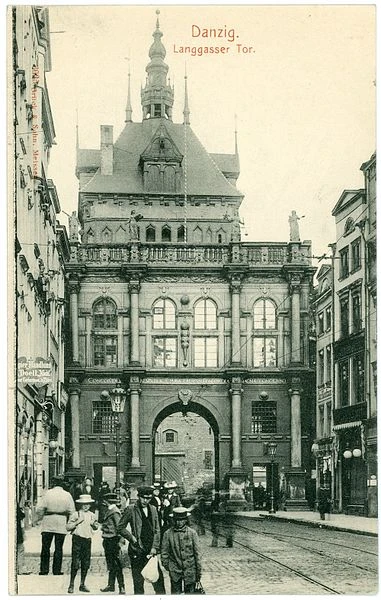
The most popular attractions
Golden Gate reviews in Google:
Frequently Asked Questions
The Golden Gate was built in 1612-1614
The designer of the Golden Gate was Abraham van den Blocke.
The Golden Gate represents Dutch Mannerism with elements of classical architecture.
Today, the Golden Gate is managed by the Association of Polish Architects and serves as a cultural space.
On the Golden Gate there are sculptures symbolizing Peace, Freedom, Wealth, Fame, Prudence, Justice, Piety and Concord.
Yes, although it was more representative than defensive in nature.
The gate was damaged in 1945 during the war.
The reconstruction of the Golden Gate took place in 1957.
Unique features include a triumphal arch, Ionic and composite columns, and rich sculptural decorations.
It was originally called the Długouliczna Gate.
It originally functioned as a city gate, later as a school of fine arts, and now as a cultural facility.
Yes, in the years 1803-1872 the Royal School of Fine Arts was located in the Golden Gate.
